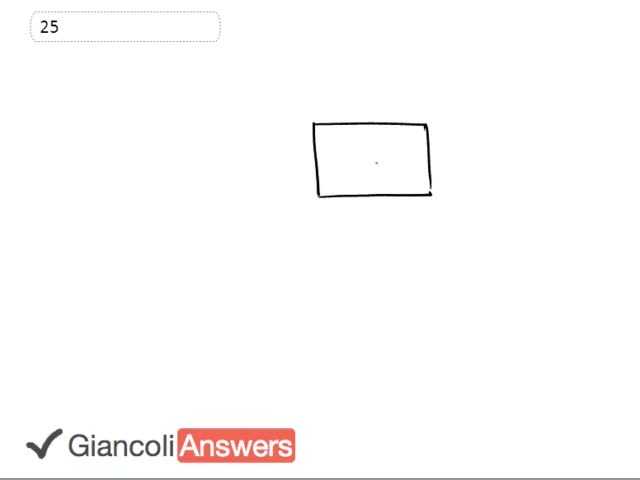
b)
c)
d)
e)

In order to watch this solution you need to have a subscription.
So this mass is being raised, let's draw a picture of that. It's being raised with, by a tension force. The cable, its attached to it. There is gravity going downwards. The gravity arrow is shorter than the tension because it's accelerating upwards, so there's a net force upwards. It's accelerating upwards, and it's going to be going some height upwards. Here's how high it goes, okay. And the first part of the question we have to find that tension force. So the up force is minus the down force is equals mass times acceleration, that’s Newton's second law. We'll solve for the tension force, its 'ma' plus the gravity which is 'mg'. And factoring out 'm' to make this look nice, we have 'm' bracket 'a' plus 'g'. And we'll substitute in numbers, 285 kilograms for the sixth edition, fifth edition is different and we'll talk about that in a minute.
We have 0.16 'g's which means 16% of 9.8. So 0.16 times 9.8 meters per second squared, that’s the acceleration, plus 'g'. And we end up with ANSWER newtons. We'll keep lots of digits for the intermediate calculation, we're going to be using that number for a future calculation. But here's our final answer for part A, ANSWER newtons. That’s the tension force in the cable.
In part B, we want to find the net work done on this thing is being raised. So that’s the net force times distance, which is mass times acceleration, that’s what the net force is. Times distance, and that is 285 kilograms. Hey, that says mad by the way, that’s pretty cool. And this is 0.16 times 9.8 meters per second squared and times 22 meters. And that is ANSWER joules and we'll state that as ANSWER joules. That’s how much work is done on it, net. That’s net work done, alright.
It’s a bit of a long question, so let's get to part C here. What's the work done by the cable? Well, that’s the force of the cable exerts times the distance. That’s 3,239.88 newtons times 22 meters and that’s 7.13 times ten to the four joules. The work done by gravity equals force of gravity times distance and that’s negative 'mg' times 'g'. And that negative is because gravity is in the opposite direction to the direction of motion. It's going up but gravity is down, so that’s why there's a negative. So we have negative 285 kilograms times 9.8 newtons per kilogram times 22 meters. Note throughout I'm using the raw data from the question. There are alternative ways to answer these, we could use the answers for part A, B or C for future parts, but it's always best to use numbers from the actual question to avoid the possibility that perhaps he made a mistake in one of the parts. So, when possible avoid using any of your answers in future, step to the question, just in case. So there's the work done by gravity, negative ANSWER joules.
In part E is where were supposed to find the final velocity. Well, we know that the change in kinetic energy is equal to the net work done and that equals 'mad'. That is one half 'mvf' squared equals 'mad'. Normally you would say, change in kinetic energy is one half 'mvf' squared minus one half 'mvi' squared. But the initial speed is zero, and so we're left only with this first term. We'll solve for 'vf', so multiply by two, also noticing that the mass is cancel. Taking the square roots to both sides also we get 'vf' equals the square root of two times 'ad'. So's the square root of two times 0.16 times 9.8 meters per second squared times 22 meters. This gives us ANSWER meters per second.
For the fifth edition a bunch of numbers have to change although the concepts are all the same. For the fifth edition we have 220 kilograms here instead of 285. The acceleration is 0.15 times 'g', so 15% of gravity is acceleration and the fifth edition answer to part A is 2.48 times 10 to the three newtons. In Part B again 220 kilograms, 0.15 times 9.8 and it goes 21 meters instead of 22. And the fifth edition answer for part B is 6.79 times 10 to the three joules. For part C we have the answer from part A over here, so that’s 2.48 times 10 to the three newtons and only over 21 meters. Fifth edition answer, 5.21 times 10 the four joules and we'll change this to 220 kilograms, 21 meters here. And fifth edition answer for the work done by gravity is negative 4.53 times 10 to the four joules. And here we change the 0.16 to 0.15 and the 22 changes to 21. Of course there's still the two there and the fifth edition answer for the final speed of this object is ANSWER meters per second.
Your a mad yoke sire ditchko